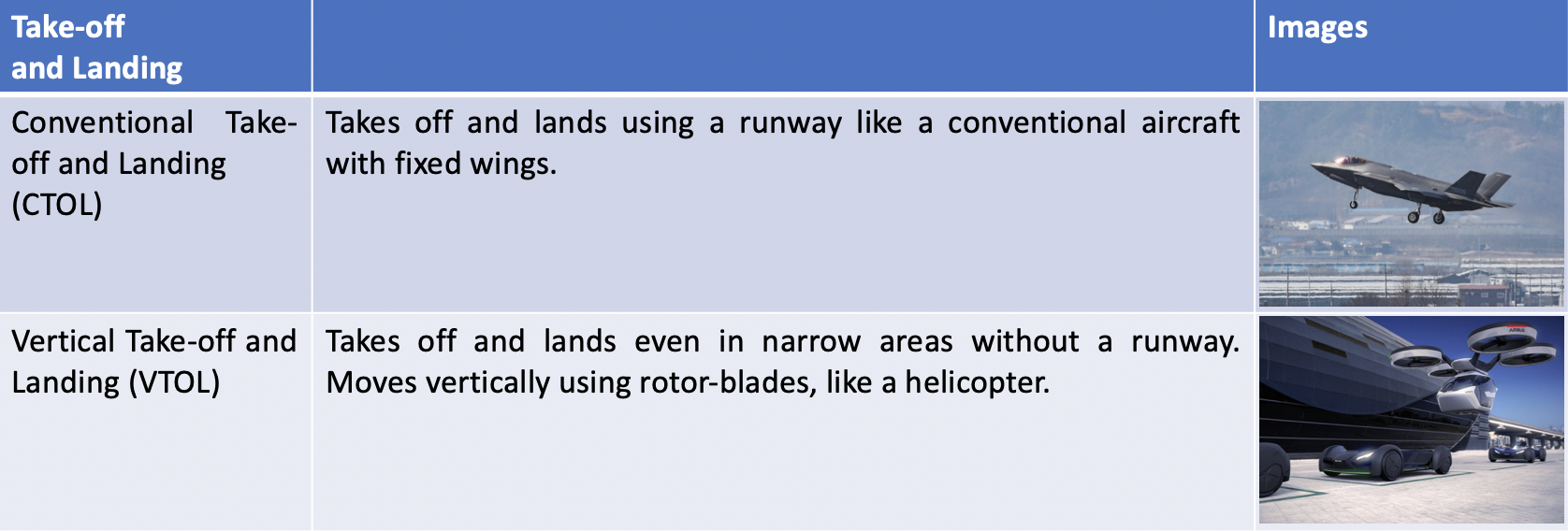Shim Hyun-chul, a professor of Electrical Engineering at the Korea Advanced Institute of Science and Technology (KAIST), delivered a lecture on April 8th at the 2020 Spring Knowledge Awakening on Stage (KAOS) lecture, a foundation that shares the scientific knowledge through conferences and publications. The lecture is about self-driving cars, drones, and when flying cars will be ready for take-off. Although some people argue that personal air vehicles (PAVs), such as flying cars, are just science fiction, many countries are continuously working on developing PAVs to bring a new air transportation system into society. Therefore, the Sungkyun Times (SKT) will look into what a PAV is, what needs to be improved, and its possible influences on society.
About Personal Air Vehicles
Concept of Personal Air Vehicles
A personal air vehicle is a light aircraft that is also referred to as a flying car or a roadable aircraft. Since PAVs can function as cars and airplanes, they have two modes: driving mode and flight mode. When PAVs are in driving mode, the engine connects to drive wheels, but when PAVs convert from drive to flight mode, the engine switches its connection to the propeller.
In 2003, the National Aeronautics and Space Administration (NASA) defined the term PAV and presented a list of five requirements: safety, efficiency, ease of use, accessibility, and economic efficiency. Along with these conditions, the aim of PAVs is to provide door-to-door transportation, meaning individuals can easily travel from home to their destinations utilizing both the ground and air transportation networks. NASA also announced that PAVs should have approximately two to six seats with a cruising speed of 150 to 200 mph (322km/h), and a flying range of 800 miles (1,300 km).
PAVs can be classified into single-mode and dual-mode depending on their ability to convert from an aircraft to a car. They can also be classified by the necessity of a runway and the way they take off and land.


VTOL in dual-mode is the ultimate model that PAVs pursue because this is practically suitable to narrow areas like cities using both the air and ground.
Development of Personal Air Vehicles
The Curtiss Autoplane, invented by Glen Curtiss in 1917, is widely considered to be the first roadable aircraft. The vehicle was 27 feet, aluminum-bodied, and had twin-boom tails with a four-blade propeller. Although it was capable of lifting off the ground, it never succeeded in test flight due to a lack of skills and technology. Several years later, after NASA defined the term PAV, the vehicle and technology developed with a specific standard. Then, in 2009, graduates of the Massachusetts Institute of Technology (MIT) founded the company Terrafugia and introduced a two-seater PAV with folding wings, called Transition. It is a dual-mode aircraft that can quickly switch from flight to driving mode within 30 seconds.
These days, many scientists and companies like Uber Elevate focus on developing PAVs. Other than Uber Elevate, which has actively participated in PAV development since 2016, global companies such as Audi, Toyota, and Hyundai have heavily invested in the PAV market. Uber announced that the company aims to perform test flights of Uber Taxis, flying taxis, in Dallas, Los Angeles, and Melbourne in 2020, and plans to launch the service to the public in 2023. Moreover, in Korea, Hyundai and Uber teamed up and revealed their new PAV model, the S-A1, in January 2020, and are planning to commercialize it in 2028.
Needs for Improvement
Development for the Stable Flight
1. Accident Prevention
PAVs have tremendously improved with the advancement of related technologies, such as self-driving cars and drones, but still, many systems need to be prepared for safety. In particular, vehicles should have a safeguard system to prevent accidents caused by the pilot’s mistakes. If there are several fail-safe mechanisms, human errors can be controlled under the system, thereby ensuring safety. The fail-safe mechanism is a device or practice which minimizes the damage to other equipment or people by inherently responding to the error. For instance, a biometric sensor can be one type of fail-safe mechanism. By setting up the system to land automatically when the sensor detects any problems or symptoms from the pilot, the flight will be safely completed before any accident occurs. As it shows, scientists should contrive for further complementary systems to ensure safety.
2. Development of Materials
PAV requires equipment from both a car and an airplane. Therefore, scientists have difficulty applying suitable materials for PAVs since a variety of systems need to be used in a limited space. Therefore, materials need to be developed to become more energy-efficient, durable, and compact for a long and stable flight and drive. For instance, scientists are researching to improve battery life. The United States Department of Energy is currently working on increasing the energy density of lithium-ion batteries from 200 Wh/kg to 500 Wh/kg before 2021. Furthermore, the size of the equipment can be decreased by applying fly-by-wire (FBW) systems. The FBW is a system that replaces the conventional flight controls with an electronic interface. While traditional control systems of mechanics are relatively heavy because they require equipment like pulleys, hydraulic pipes, and tension cables, the FBW relieves that burden by replacing them with electronic signals, which eventually reduces the weight of the aircraft. Although several prototypes have succeeded in test flights, materials need more improvement for a better quality of PAVs.
Preparation of Legislation and Infrastructure
Since PAVs are emerging types of transportation that utilize the air, the legal system and infrastructure are not sufficient. Various legal matters, such as flight regulations and procedures to obtain a certificate of PAVs, should be clarified with the cooperation of the government. In the case of the United States (US), the Federal Aviation Administration already announced the guidelines of PAVs in 2016, such as speed, weight, flight altitude, and safety. Furthermore, the infrastructure for take-off, landing, and charging spaces should be prepared. For example, there are two types of take-off and landing sites in Singapore: vertiports and vertistops. Vertiports are places where PAVs can charge and rearrange like airports, and vertistops are places where PAVs can drop off or pick up passengers or cargo. Similar to these sites, it could be plausible to reconstruct or remodel the top floors of the buildings into airports to save spaces for PAVs.

Improvement for Social Acceptance
The noise and cost problems are both obstacles that may make it hard for PAVs to be accepted by society. If the engine or the propeller produces a noise similar to that of a regular airplane, it will be challenging to use PAVs in urban areas. Since the population is heavily concentrated in cities, the noise problem is one of the most critical considerations. In response to this problem, Uber Elevate contrives to find a way to reduce the noise by applying electric motors (eVTOL) when launching the air taxi service in 2023. Therefore, scientists also need to work on finding several ways to reduce the noise.
Furthermore, the cost should be adjusted to keep up with the market price. Although the initial cost of PAVs is expensive, it should decrease to become popularized in society. The mass production of PAVs can be one possible solution to the problem. For instance, utilizing some parts from cars and airplanes, which are already prepared in the factory production line, can lower the production costs of PAVs and can lead to the mass production of PAVs.
Future Impacts of PAVs in Korea
Technical Expectations
If scientists successfully develop PAVs, PAVs will have a significant influence on technology. Korea will be capable of possessing various techniques such as electric propulsion systems and low weight high-efficiency materials through research on PAVs. If Korea succeeds in developing the core technology of PAVs, the country can assure the competitive advantage in the field. The technological growth might help Korea to be advanced in the PAV market as well as other related areas such as the car industry. This is one of the reasons why several automobile companies like Hyundai and Audi are now focusing on PAVs. Moreover, Korea can become a leading group in the world by applying advanced technologies when new industries emerge.
Economical Expectations
In Korea, wealth and economic activities are mostly concentrated in Seoul due to urbanization. Urban concentration can result in economic inefficiency since it reduces the possibility of growth in other cities. However, the introduction of PAVs can relieve the concentration in urban areas and provide an opportunity to promote other cities by encouraging people to expand outwards. For instance, if PAVs are in some areas where large and small islands are near, they can connect islands and lands to activate trade and businesses.
Social Expectations
Many people spend a tremendous amount of time on the road and suffer from traffic congestion since driving is practically the only way to move from city to city. PAVs, however, can expand the transportation network from two dimensions to three dimensions. It means that PAVs can also broaden the choice of transportation to people and reduce traffic congestion. In 2017, the Korea Transport Institute expected that travel time would be reduced by about 40% after the introduction of PAVs. Moreover, PAVs can encourage further interaction with different people and cultures by expanding an individual’s activity space, which can also lead to cultural diversity. If one can visit faraway places more frequently, then he or she can easily be in contact with various food cultures or lifestyles.

As self-driving cars are getting ready to be commercialized, the world’s next goal is a personal air vehicle. The introduction of PAVs, which people think is a distant future, is closer than what is expected since several prototypes have been released already, and test flights have begun. PAVs will be successfully introduced in society if technology gets improved to complement current technical issues, and appropriate regulations and infrastructures are prepared.
